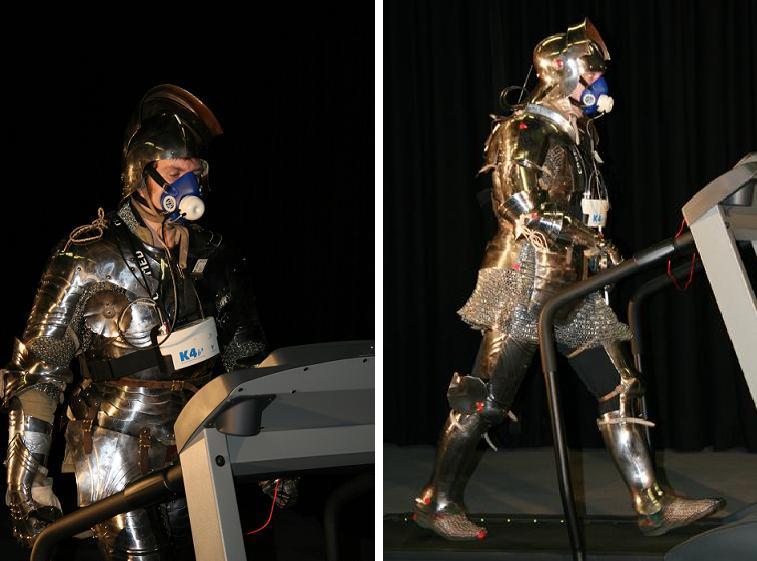‘Tut! I have the best armour in the world. Would it were day!(W. Shakespeare, Henry V, 1599)
In Medieval Europe, soldiers wore steel plate armor for protection during warfare. Heavier armor would provide greater protection, but would also make it harder for soldiers to move around during the fight. In 1415, Henry V’s lightly-armored men-at-arms defeated the French knights in the battle of Agincourt; would the French have had a better chance in lighter armor? To what extent did Medieval armor limit soldiers’ performance?
A recent study published in the Proceedings of the Royal Society of London, Biological Sciences, now shows clear experimental evidence for limitations imposed by wearing armor on Medieval soldiers’ performance. The research showed that wearing armor doubled the amount of energy that a soldier used to walk or run, and substantially reduced their speed. For instance, a 38-year old man who could normally walk and run up to 10 km/h would have been limited to 6 km/h in armor.
The effect was greater than could be accounted for by the extra weight alone, and reflected the distribution of armor around the body. ‘Carrying a load of about 30 kg spread around the body requires more energythan carrying the same load in a back pack’, explains author Dr Graham Askew, from Leeds University. ‘This is because, in a suit of armour, the limbs are loaded with weight, which means it takes more effort to swing them with each stride. If you’re wearing a backpack, the weight is all in one place and swinging the limbs is easier.’
As if that wasn’t enough, suits of armour also appear to have constricted breathing. Armour limits the amount of air that can be taken in at each breath and increases the amount of energy required to breathe. ‘Being wrapped up in a tight shell of thick steel makes one feel invincible, but also unable to take a deep breath’, says author Dr Federico Formenti, from the University of Auckland. ‘You feel breathless as soon as you move around in Medieval armour, and this would likely limit soldiers’ ability to fight’.
The research was undertaken with a team of highly skilled participants accustomed to wearing armour for shows at the Royal Armouries Museum in Leeds, United Kingdom. Researchers measured the energy required to walk and run while wearing Medieval armour, and showed the associated increased energy cost and its mechanical determinants.
These new biomechanical and physiological results offer the potential to more accurately interpret the tactics employed during European Medieval battles. Together with numbers and condition of soldiers, equipment availability, and terrain state, the high energy demand of moving in armour was certainly taken into consideration when planning an attack on a Medieval battlefield.

Dr Federico Formenti trying a replica of a Medieval armor (left panel). A participant during the experiments on the treadmill (right panel). Credit: Courtesy of the University of Leeds
Citation: Askew GN, Formenti F, Minetti AE (2011). Limitations imposed by wearing armour on Medieval soldiers’ locomotor performance. In press, Proceedings of the Royal Society of London, Biological Sciences. http://rspb.royalsocietypublishing.org/





Comments